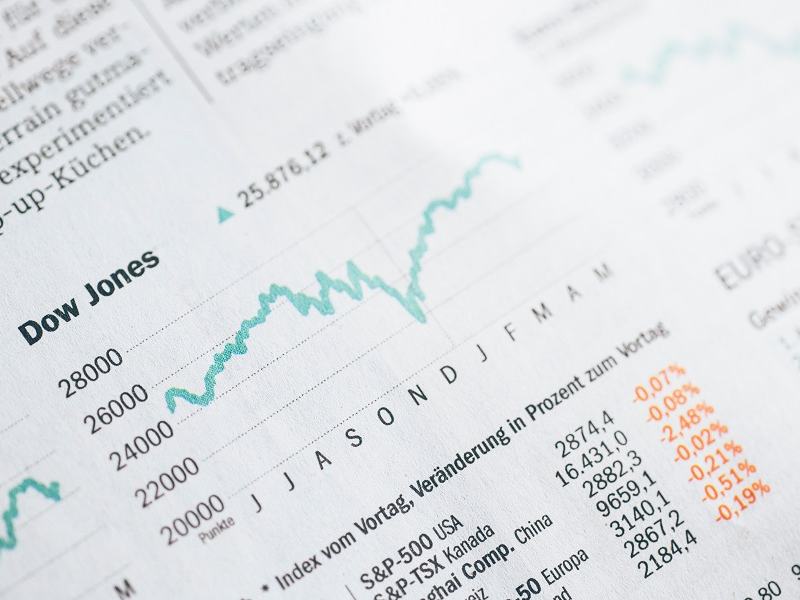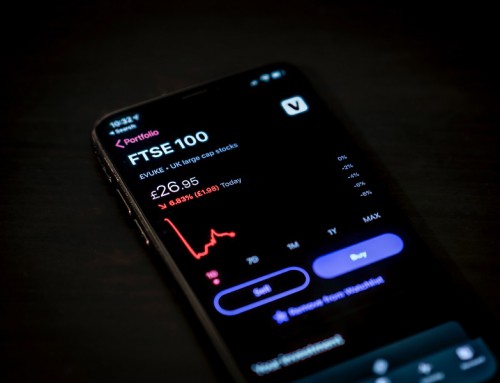We are in the midst of a global pandemic and this has caused the global economy to contract at record levels. The US economy shrank by an annual rate of 32.9% for the second quarter of 2020, the most severe contraction since the second world war. Here in Singapore, we saw an even steeper contraction of 42.9% in the same period. Yet despite the gloom in the economy, the US stock market, notably the major indexes like the Dow Jones Industrial Average, the S&P 500 and the NASDAQ are all hitting record levels in and around end August, early September 2020. The S&P 500 hit a 52-week low on the 23rd of March 2020 at 2,191.86 and rallied to set a record high of 3,588.11 on the 2nd of September 2020. During that same period, the US had gone from 10,410 new Covid-19 cases on 23rd of March 2020, to a record of 75,821 new cases on 17th of July and 37,630 new cases on the 2nd of September 2020. The Singapore stock market has rebounded as well and is about 15% off the low of 2,208.42 points set in end March 2020. For the sake of this argument, we will be referencing mainly to the US stock market to try and understand why as the US grapples with a pandemic, rising trade tensions with China and domestic violence, Wall Street is having one of its best periods in history.
The stock market is not the economy
Most investors may equate the stock market to the economy but in fact, they do not move in tandem. During times of economic prosperity, the stock market usually follows an upward trajectory. However, during times of economic contraction, the correlation does not seem to hold true always. The stock market is instead a barometer of where the market participants, in this case, the investors in the stock market, think that stock prices will be in the near future. If investors have reason to believe that stock prices will be higher in the near future, they will enter the stock market before the anticipated rise occurs. The current situation in the US stock market seems to be such. Investors seem to believe that the worst is over for the US economy. Ever since the initial lockdown in states across the country, the US economy has opened up and business activity has resumed to almost pre-lockdown levels. Other positive developments which might happen in the near term include the development and production of a possible Covid-19 vaccine. To cap that off, the current US President Donald Trump is continually talking up the economy, emphasising any economic improvements at any opportunity. All this helps to create a sense of euphoria in market participants.
The US Federal Reserve’s accommodative monetary policy
The US Federal Reserve (The Fed) is embarking on a policy that many are calling quantitative easing unlimited. In essence, the Federal Reserve has stated that it will act as a lender of last resort and will purchase as much corporate debt as needed to prop up the economy. This open-ended commitment to purchase as much assets as possible so long as it keeps the markets moving has let to a huge barrage of money into the US economy. Despite the gloom in the economy, corporations have access to unlimited easy credit from The Fed. To many large corporations, investing this easy credit in the stock market makes more sense than expanding production when demand for most products is expected to remain low.
The chase for yield
Inflation erodes the value of money and it is expected that with all the easy credit that is available, governments are trying to inflate the economy because the converse, deflation, is a more problematic issue. In times of economic contraction, asset prices tend to become cheaper. To some extent, things are getting cheaper in the current economic situation. As businesses struggle to cope with safe distancing measures, prices of many goods and services are coming down. As businesses close or jostle for sales, prices of goods and services are going at a discount. However, with all the money being pumped into the general economy, something has to happen. As banks and corporations are flushed with easy credit, yields in traditionally safe havens like fixed deposits are extremely low. This then poses a predicament for people and corporations looking for higher yields. The stock market is seen as a very viable alternative to chase for higher yields. The notion that if market participants in the stock market have a longer-term investment horizon they should profit is something that many believe in. Banks typically “borrow” from the public, individuals and companies, by using monies in deposits to lend to other borrowers but in the current situation, the government is a much cheaper source of funds offering near-zero interest rates. The public is then left to seek returns elsewhere and eventually gravitate towards the stock market.
Tech stocks are leading the way
The stock market rise is not universal across all sectors. Technology companies are benefitting greatly from the pandemic as more people are working and staying home. More online content is being consumed and companies like Netflix, Facebook, Amazon, Google and Zoom are benefitting from this. The S&P 500 is a market-capitalisation weighted index of the 500 largest publicly-traded companies in the US and technology stocks make up more than 25% of the benchmark index. As more businesses and households go online, the tech-driven rally is not perceived to be abating any time soon. To many stock market participants, investing in technology stocks are seen as safe bets on a technology-driven future. Thus despite the rally, the main rise in stock prices are driven by the technology stocks. Other sectors invariably are rising as a spillover effect from the tech-driven stock market rally.
Technology stocks are not a true barometer of the economy.
Technology companies like Zoom Video Communications (Zoom) do not hire as many employees as a manufacturing company like Ford Motor Company (Ford). Year to date, the stock price of Zoom has gone from USD$68.72 on January 1st to a high of USD$457.69 on September 1st with a market capitalisation of about USD$128 billion. Ford has instead seen its stock price from USD$9.42 on January 1st plunge to a low of about USD$4 in late March and is currently trading at about USD$6.90 with a market capitalisation of about USD$26.9 billion. Zoom hired about 2,500 employees while Ford hires about 100,000 employees in North America despite having a market capitalisation of about 5 times that of Ford. The impact of a soaring stock price in Zoom can only be felt by people connected with the company. A slowing economy should see a fall in the demand for motor vehicles. If Ford were to cut 2.5% of its workforce, that would be equivalent to the whole workforce of Zoom. The boom in the technology sector has resulted in wealth creation that is concentrated in a sector that does not hire a large proportion of the workforce. In fact, this recession is extremely worrying as the wealth transfer is from the masses to the already-wealthy few. 2020 will be remembered as breakout years for large tech companies as companies like Amazon, Apple, Google, Facebook, Zoom and Tesla saw their stock prices increase significantly. In many cases, the increase was in multiples. Tech stocks make up more than a quarter of the S&P 500 and thus a rally in this sector would result in an increase in the benchmark index. Singapore’s Straits Times Index (STI) is not filled with tech stocks like the S&P 500 and thus did not see the same level of recovery.
Too big to fail
Lessons learned from the Global Recession in 2007-2009 seemed to be that corporations deemed too big to fail will most likely be bailed out by the government. Lessons learned from the fallout of Lehman Brother’s collapse are still fresh in regulators’ minds. The debate as to whether Lehman should have been allowed to fail are still going on but the fallout from that collapse reverberated throughout the global economy. Even here in Singapore, there were investors who had ploughed their savings into financial products that were connected to Lehman. DBS Group, Singapore’s largest bank spent some US$53.4 million to compensate some investors who bought structured products linked to Lehman. Despite the US congress reiterating that they would break up the big banks and if the banks are too big to fail, they are too big, the truth is that Congress cannot afford another Lehman style collapse. Big banks and companies will continue to receive support from the US government and in today’s predicament, the government is also keeping many small and medium businesses afloat. Despite burning through hoards of cash, the truth is that governments around the world are propping up companies. The concern is that some of these companies may already be failing whether there was a pandemic or not. This propping up of inefficient companies is causing some economists and policymakers to be concerned about the rise of zombie companies. Christian Sewing, the head of Deutsche Bank, had highlighted this problem recently but acknowledged that this is a result of what needs to be done to counter the economic effects of the pandemic. The widespread support for companies is fueling the positive notion that investing in the stock market, which is essentially investing in companies, is a sure-fire way to make some money as these companies will not fail.
The retail investor has more time and knowledge to invest
As the world enters and exits lockdowns and as working from home arrangements become commonplace, more retail investors have more time on their hands to get involved in trading stocks. Information about investing is also readily available and many online brokerages have leveraged on technology to make investing extremely convenient for the common man. The rise of the home retail investor, the availability of time and knowledge and the constant barrage of news showing that stock prices are soaring cumulate to a very bullish stock market.
Fear of missing out
Finally, despite all the knowledge out there, herd mentality cannot be underestimated. There is a quote by George Carlin that says “never underestimate the power of stupid people in large groups”. To label all market participants in the stock market stupid would be inaccurate but the gist of the statement seems to be that when a large enough group of people partake in a certain activity, it seems to be right to the general public and many others start to join in thinking that if everyone is doing it, this should be right. I may be grossly inaccurate but when I look at the GDP and unemployment numbers versus the euphoria in the stock market and perhaps to a limited extent, the property market, I do think that there is some misplaced faith in the financial system. There is perhaps little that the common man can do as the wealth divide exacerbates while inflation erodes his savings. The search for yield directs the retail investor to the stock market and to purchasing property. We must always remember that not every investor looks at financial ratios like price to earnings and other fundamentals of a company but instead are driven to buy an asset in the hope of selling it off at a higher price at a later date. This is speculative activity is commonly mistaken as investing.
We are living in a very unique time due to the pandemic. Despite the fact that I feel that something is gravely broken with the financial system, the fact that inflation is eroding peoples’ savings is a real and present problem. Even if the markets, stocks and property, tide through this current situation, there is a large debt crisis just on the horizon waiting for the global economy. Many governments have borrowed to fund stimulus packages and the weight of this debt will weigh heavily in the years to come. Perhaps the one trait that most market participants should have is patience.
Yours Sincerely,






